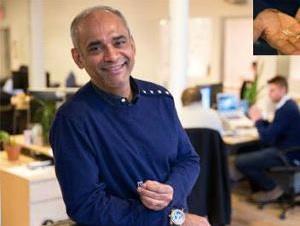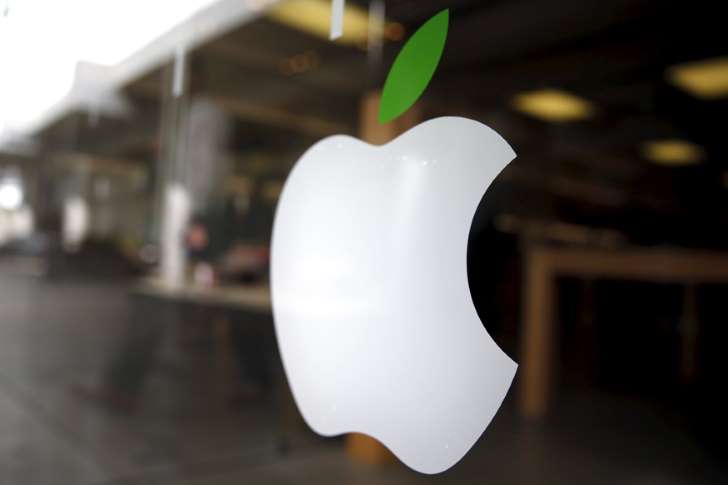April 23, 2014
WASHINGTON: Chaitanya ("Chet") Kanojia is holding his breath over a US Supreme Court ruling on his disruptive technology that he says will revolutionize broadcasting and cheer the public by lowering cost of services.

Chaitanya ("Chet") Kanojia
April 23, 2014
WASHINGTON: Chaitanya ("Chet") Kanojia is holding his breath over a US Supreme Court ruling on his disruptive technology that he says will revolutionize broadcasting and cheer the public by lowering cost of services.

Chaitanya ("Chet") Kanojia
For entirely different reasons, so are major broadcasters (ABC, CBS, NBC, Fox etc): they see the technology gambit leading to copyright infringement, a massive loss of revenue, and the death of broadcasting as we know it.
On Tuesday, the country's apex court did not give a whiff of which way it would go — itself torn between the two sides as it began hearing the landmark case that has transfixed most people plugged into broadcast, which is pretty much everyone.
At the heart of this profound case is whether Aereo, the nifty New York start-up founded by the Bhopal-born Indian-American, has the right to pick up broadcast signals off the air with its breakthrough technology — an antenna the size of a postage stamp — that it will giving subscribers for a fraction of the cost they pay for cable services. Aereo's thumb-print sized device can capture TV signals from the airwaves and direct them to your laptop, tablet, or smartphone for as little as $ 8 compared to the up to $80 plus that people currently pay for cable services.
"Your technological model is based solely on circumventing legal prohibitions that you don't want to comply with," Chief Justice John Roberts observed sharply at the hearing, seemingly reflecting the argument of the powerful plaintiffs that mooching TV signals off the air amounts to theft of content and copyright violation. Aereo says its technology does nothing more than what subscribers have been able to do lawfully since the time the old-fashioned rabbit ear antenna — watch free broadcast if you are able to catch signals over public airways.
"There's no content being provided. There's (only) equipment that's being provided," Aereo's lawyers maintained before the court in Tuesday in a case that attracted nationwide attention.
Times have changed, technology has become niftier, and new trends have caught on — and the Supreme Court appeared to struggle with evolving a new consensus of how to protect traditional and time-tested business models while not putting a crimp on innovation. "What disturbs me on the other side is I don't understand what the decision for you or against you when I write it is going to do to all kinds of other technologies," Justice Stephen Breyer agonized.
The fear is that a ruling against Aereo will affect cloud-computing services such as Google and Apple. But Roberts seemed to voice the general skepticism of the bench saying he saw no reason for Aereo "to have 10,000 dime-sized antennas, other than to get around the copyright laws." Aereo argument that it is not "publicly" transmitting content, like the cable and satellite firms, but "privately" letting a subscriber rent its equipment and decide when to receive his very own transmissions did not seem to make much of an impression on Justice Antonin Scalia either. "Is there any reason you did it other than not to violate the copyright laws?" he asked.
A ruling on the case is expected as early as June, but both sides have lined up solid arguments before both the court and the public, warning of profound consequences if the other side won. The broadcast monopolies, which have enjoyed a stranglehold on the transmission business even with the advent of the Internet, and said Aereo should pay a transmission fee like everyone else if its lifts signals, have warned that they will have to take themselves off the air and convert to cable-only channels if Aereo's runaway technology is allowed to mooch its signals.
Kanojia is fighting back with the argument that big broadcast is simply milking the small consumer. "What is at stake in this case is much bigger than Aereo. We believe that consumers are entitled to use a modern, cloud-based, version of an antenna and DVR and that consumers should not be constrained to 1950's era technology to watch free-to-air broadcast television," he said in an email massage just before the hearing began. "The broadcasters' positions in this case, if sustained, would impair cloud innovation and threaten the myriad benefits to individuals, companies, and the economy at large of the advances in cloud computing and cloud storage."
The story goes that two years ago when Kanojia first started his company, he visited the offices of the four big broadcast television networks to tell them about his plan to upend their business and strike a deal. Their response: We'll see you in court. But the lower courts backed Aereo and the 43-year old Indian disrupter seemed ready to topple a legacy business, which he sees as predatory and having feasted on the system since the 1970s, before Big Broadcast brought the case to Washington.
None of this was remotely on the cards for the Bhopal native who lived through the Union Carbide disaster in 1984 (He was lucky to live "upwind" he said in one interview) before getting an engineering degree from the National Institute of Technology and coming to the US, where he graduated from Northeastern University with a degree in mechanical engineering — not exactly the IIT-Stanford pedigree that is the hallmark of many Indian successes in the US. But academic lineage hardly seems to matter to a man who holds more than 14 patents in fields ranging from robotics to data, whose very first company, Navic Networks, an industry leader in advanced television advertising, was acquired by Microsoft in 2008 for a reported $ 250 million.
All that pales before the epic nature of the ongoing Supreme Court battle — a face-off that will have such profound consequences on the broadcast industry in the US that organizations, from the Consumer Electronics Association to the National Football League, have filed amicus briefs. "We remain steadfast in our conviction that Aereo's cloud-based antenna and DVR technology falls squarely within the law. We have every hope and confidence that the Court will validate and preserve a consumer's right to access local over-the-air television using an individual antenna," Kanojia maintained on Tuesday.
The Supreme Court's answer? Still blowing in the wind.
Courtesy: TNN
















































































































